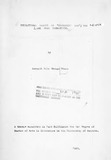| dc.description.abstract | This study exanines the educational vaiues of sigendini
Luo, the Luo oral narratives.
Oral narratives form an important genre of oral literature
whioh is recognised and accepted as literature within
the context in which the term literature is used in this
thesis. The term literature here does not refer to written
literature only, but is used in its widest context including
sung, spoken, danced or acted literature whioh is all
oral in nature.
The investigations and analysis of the sigendini Luo
have revealed that these were not used purely for
amusement and as a pastime, but that, they had other
functions and roles as well. One of these, functions was to
transmit certain educational values to the younger members
of the society. This study is an attempt to examine
critically what these educational values were, and to establish
what supplementary part they played in the education
of the Luo children.
Sigendini, as a genre of literature, are created from the
life's experiences of the people, emanating from issues,
which are social, economic, political and religious in kind.
fherefore, as is the case with written literature, sigendini
act as a mirror of the society which creates them. We can
tell the sort of life the Luo led, their history over. the years,
philosophical thoughts, ideals and beliefs from their sigendini
which we are discussing here.
The study further advances the idea that Sigendini
embody certain general knowledge that enlightens the
children about their world. The importance of work and how
dependent human beines are on their enviroment is also raised
and examples are given of actual instances where various
characters in Sigendini are engacad on work, exploiting
their enviroment for their subsistence.
The existence of a supernatural power , the Luo Nyasaye,
God, is discussed at length. From the discussion, we come
to realise that according to the Luo, religion is something
that is lived and praotised every moment of the day.
The part that sigendini play in the promotion and
training of artistic creation, using the mind and imagination
is also examined in the study. From listening to the
sigendini and also by being given opportunities to take part
in telling sigendini, the ohildren themselves, acquire the
art of story-telling and may even·tually grow up to be (at
least some of them) good story-tellers, Good speakers and
orators for they become used to adressing audiences while
they are still youne.
These points are all viewed as being important for
creating viable conditional which assist .children in their
education towards self-development and learning to live in
harmony with others in their society and to be self-reliant.
TWenty-one sigendini; are analysed in detail in the body
of the thesis as representative of samples of the na.rrative
mode. | en |

